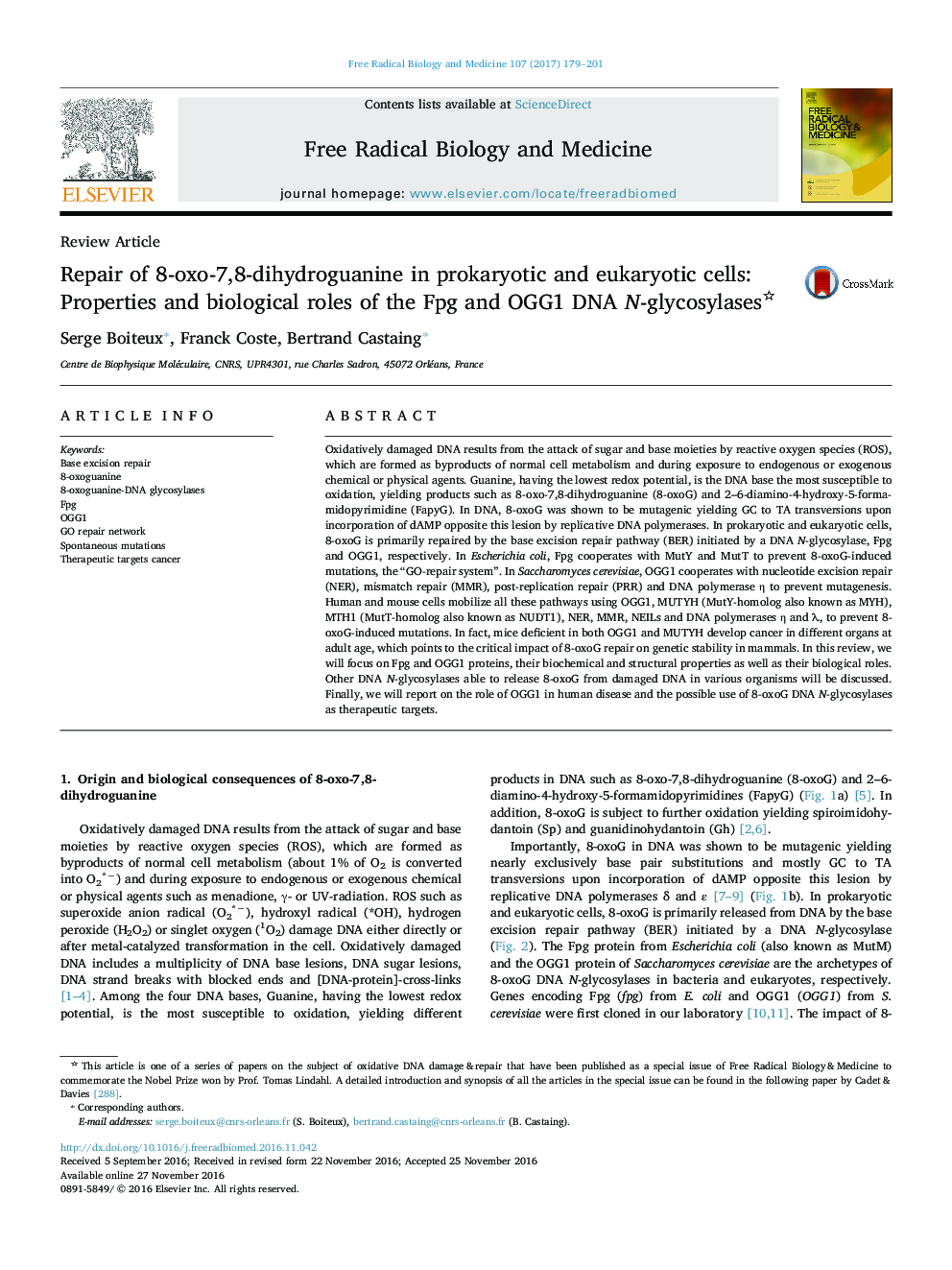| کد مقاله | کد نشریه | سال انتشار | مقاله انگلیسی | نسخه تمام متن |
|---|---|---|---|---|
| 5501818 | 1534936 | 2017 | 23 صفحه PDF | دانلود رایگان |

- 8-oxo-7,8-dihydroguanine (8-oxoG) in DNA is a major cause of genetic instability.
- Fpg and OGG1 DNA N-glycosylases initiate 8-oxoG-repair in prokaryotes and eukaryotes.
- Structural, catalytic and biological properties of Fpg and OGG1 proteins.
- 8-oxoG-repair in eukaryotes is mediated by a complex enzymatic network.
- Inactivation of 8-oxoG-repair results in cancer predisposition in mice and human.
Oxidatively damaged DNA results from the attack of sugar and base moieties by reactive oxygen species (ROS), which are formed as byproducts of normal cell metabolism and during exposure to endogenous or exogenous chemical or physical agents. Guanine, having the lowest redox potential, is the DNA base the most susceptible to oxidation, yielding products such as 8-oxo-7,8-dihydroguanine (8-oxoG) and 2-6-diamino-4-hydroxy-5-formamidopyrimidine (FapyG). In DNA, 8-oxoG was shown to be mutagenic yielding GC to TA transversions upon incorporation of dAMP opposite this lesion by replicative DNA polymerases. In prokaryotic and eukaryotic cells, 8-oxoG is primarily repaired by the base excision repair pathway (BER) initiated by a DNA N-glycosylase, Fpg and OGG1, respectively. In Escherichia coli, Fpg cooperates with MutY and MutT to prevent 8-oxoG-induced mutations, the “GO-repair system”. In Saccharomyces cerevisiae, OGG1 cooperates with nucleotide excision repair (NER), mismatch repair (MMR), post-replication repair (PRR) and DNA polymerase η to prevent mutagenesis. Human and mouse cells mobilize all these pathways using OGG1, MUTYH (MutY-homolog also known as MYH), MTH1 (MutT-homolog also known as NUDT1), NER, MMR, NEILs and DNA polymerases η and λ, to prevent 8-oxoG-induced mutations. In fact, mice deficient in both OGG1 and MUTYH develop cancer in different organs at adult age, which points to the critical impact of 8-oxoG repair on genetic stability in mammals. In this review, we will focus on Fpg and OGG1 proteins, their biochemical and structural properties as well as their biological roles. Other DNA N-glycosylases able to release 8-oxoG from damaged DNA in various organisms will be discussed. Finally, we will report on the role of OGG1 in human disease and the possible use of 8-oxoG DNA N-glycosylases as therapeutic targets.
366
Journal: Free Radical Biology and Medicine - Volume 107, June 2017, Pages 179-201